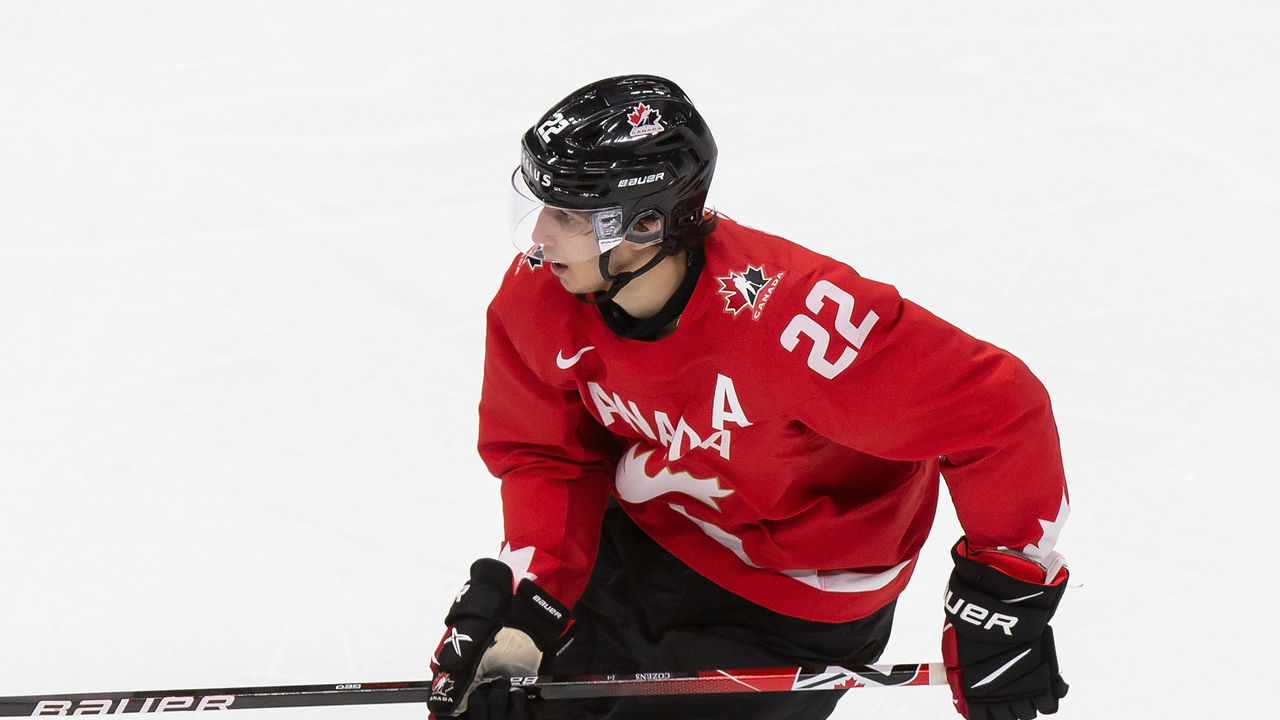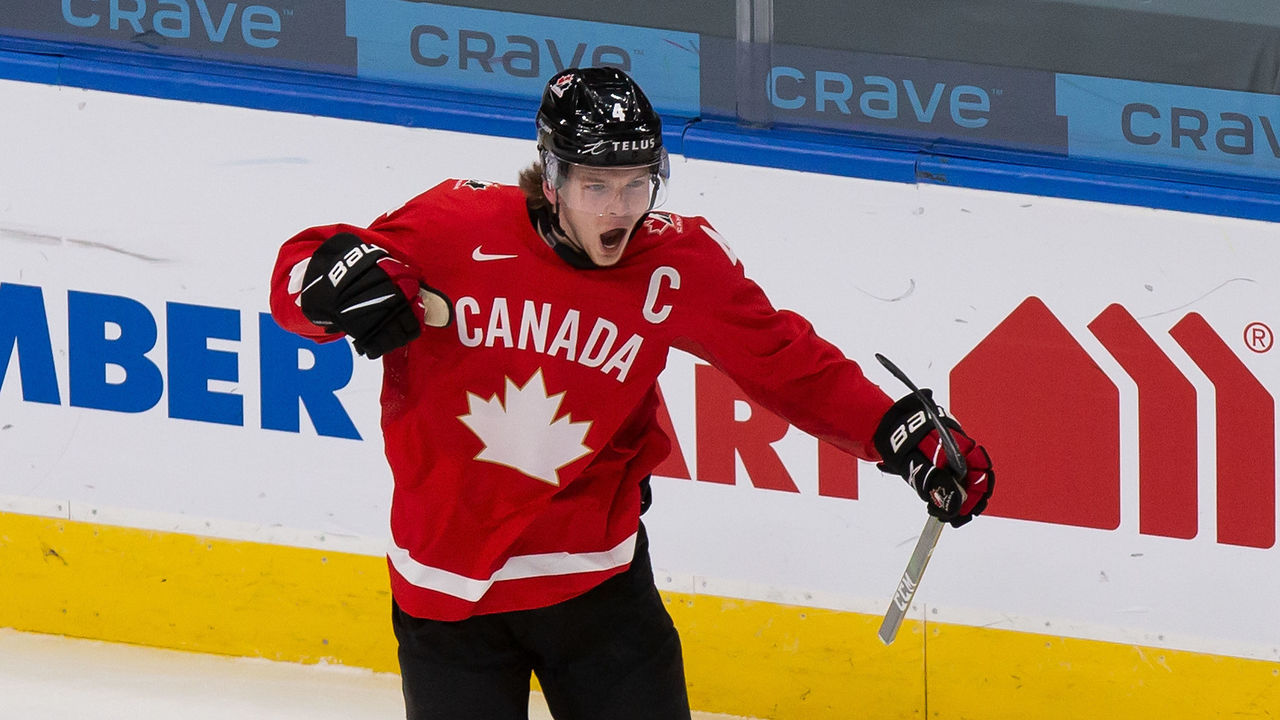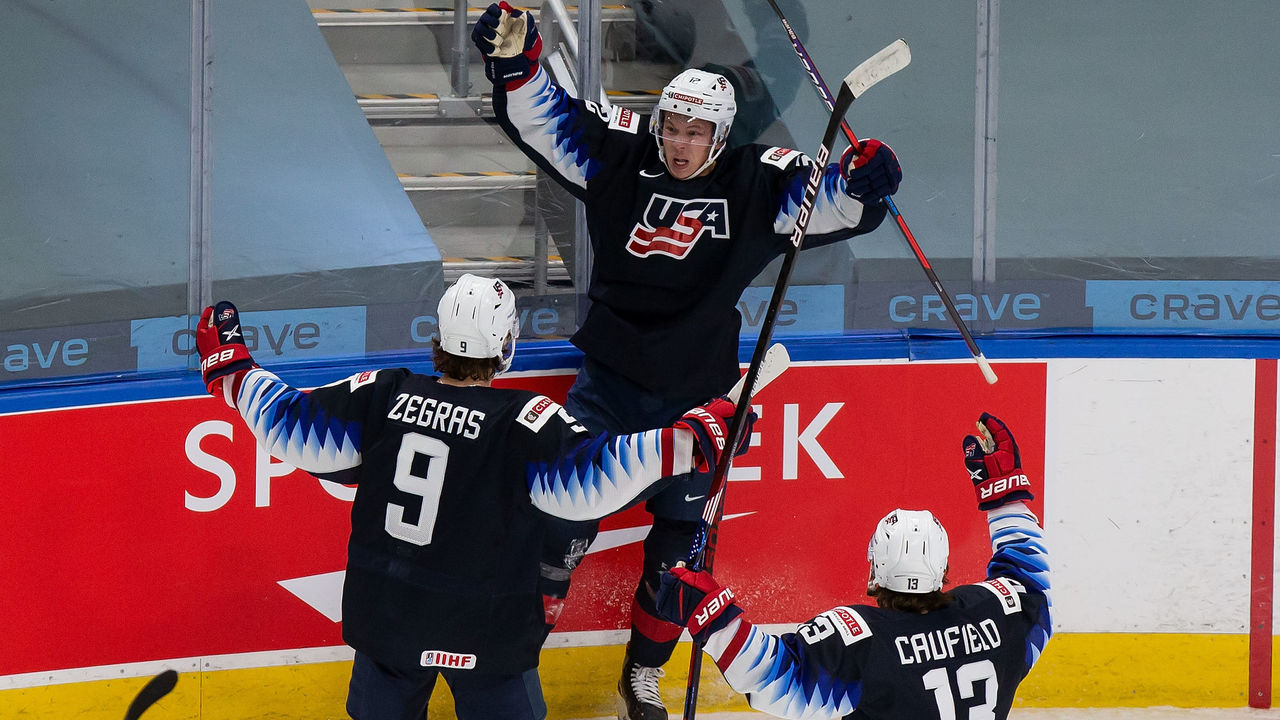Tale of the tape: Who holds the edge in Canada-USA gold-medal game?
For North American hockey fans, it doesn't get much better than Canada vs. USA for world juniors gold.
The rival countries will face off in the title match for the first time since 2017, when the U.S defeated Canada in a thrilling shootout victory. Canada will play in its 18th gold-medal game since 1996, and the team is seeking back-to-back tournament wins.
Let's look at which squad holds the edge entering the decisive game Tuesday night at 9:30 p.m. ET.
Forwards Codie McLachlan / Getty Images Sport / Getty
Codie McLachlan / Getty Images Sport / GettyThis is easily the most difficult choice. Canada is averaging 6.83 goals per game to the USA's 5.67. However, the Americans possess the edge in the shot department, averaging 39.5 per contest to Canada's 36.5.
A clear-cut offensive catalyst leads each nation. Canada's Dylan Cozens and the USA's Trevor Zegras are tied for the tournament lead in scoring with 16 points - six more than third-place Tim Stuetzle of Germany. Zegras is the more skilled and dynamic player, while Cozens is nicknamed "The Workhorse from Whitehorse" for a reason: he's relentless.
There's a strong argument that the USA's top-six forwards are more dangerous. Beyond Zegras (the No. 9 pick in 2019), fellow 2019 first-round selections Alex Turcotte (No. 5), Matthew Boldy (No. 12), and Cole Caufield (No. 15) round out the group, along with Matthew Beniers and sniper Arthur Kaliyev, whose shot is NHL ready.
There may not be as much firepower for Canada up front, but the team's depth is astounding. Every Canadian forward was a first-round pick, compared to five for the Americans. That allows head coach Andre Tourigny to roll four lines and keep everybody fresh. Canada's bottom-six should be able to expose the USA's third and fourth lines.
This is nearly a toss-up, but it's hard to argue against Canada's collection of first-round picks.
Edge: Canada
Defense Codie McLachlan / Getty Images Sport / Getty
Codie McLachlan / Getty Images Sport / GettyCanada has allowed just four goals in six games so far during the tournament, largely due to the team's defensive group.
With Bowen Byram and Jamie Drysdale leading the way, Canada's collection of blue-liners runs deep. The team also features Kaiden Guhle, Braden Schneider, Thomas Harley, Justin Barron, and Kaedan Korczak. Canada has been suffocating opponents in the defensive zone, making high-danger scoring chances rare.
Meanwhile, team captain Cam York and recent fifth overall pick Jake Sanderson lead the United States' top-heavy defensive corps that doesn't match Canada's depth.
The Americans have shown two sides to their game this tournament, producing three straight shutouts to close out the preliminary round, and a 5-3 loss to Russia in the country's opener along with a tight semifinal victory over Finland.
While the USA is often sound defensively, the team is also prone to costly lapses. With nearly zero defensive blemishes for the Canadians so far in the tournament, blue-line depth is ultimately what separates them from the U.S.
Edge: Canada
Goaltending Codie McLachlan / Getty Images Sport / Getty
Codie McLachlan / Getty Images Sport / GettyIt's rare that two goaltenders from the same NHL organization face off in such a high-stakes game. The Florida Panthers selected the USA's Spencer Knight with the 13th overall pick in the 2019 NHL Draft, and then spent a seventh-round selection in 2020 on Canada's Devon Levi.
Levi wasn't on Canada's radar until months before the tournament, when he was surprisingly invited to the team's camp and made the roster. The netminder was given the start for Canada's opener, and he's been spectacular, stopping 57 of 57 shots so far in the playoff round and posting a perfect 6-0 record. His three tournament shutouts tie him with Justin Pogge for the Canadian tournament record. Levi is clearly in the zone with a sparkling .975 save percentage and 0.53 goals-against average, and he'll look to close out the tournament on a high note.
Meanwhile, Knight hasn't been as sharp for the Americans as some may have hoped, despite the better track record and experience entering this year's tournament. The 19-year-old is one of eight returnees for the Americans after a disappointing early exit last year. He's been relatively solid, stopping 33 of 36 shots against Finland to secure a finals berth while logging a .921 save percentage and 1.98 goals-against average overall.
Knight rebounded nicely following a poor showing in the team's opener vs. Russia. He undeniably possesses the skill set to steal a game for the Americans, but Levi has simply outdueled Knight so far in the tournament.
Edge: Canada
Special teams Codie McLachlan / Getty Images Sport / Getty
Codie McLachlan / Getty Images Sport / GettyThe Americans own the tournament's best power play (42.9%) and the third-ranked penalty kill (76.9%). Canada ranks second with the man advantage (33.3%) and fourth when shorthanded (76.5%).
The penalty kills are so close it's a wash, but the USA's power-play advantage is substantial. The unit of York, Zegras, Caufield, Kaliyev, and Boldy is downright lethal. The five highly skilled players complement each other very well. They also have undeniable chemistry that Canada's power play can't match.
York, Zegras, Caufield, and Boldy were all teammates on the U.S. National Team Development Program in 2018-19 with the U18 team, and in 2017-18 on the U17 squad.
For the Americans to win this game, their power play will need to play a huge part. The key for Canada will be staying out of the box.
Edge: USA
Copyright (C) 2021 Score Media Ventures Inc. All rights reserved. Certain content reproduced under license.